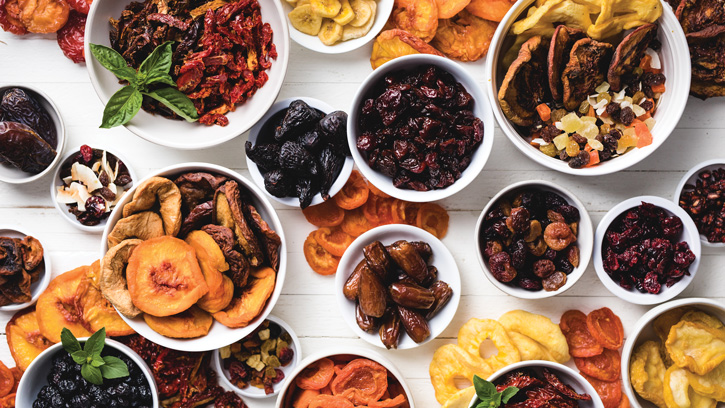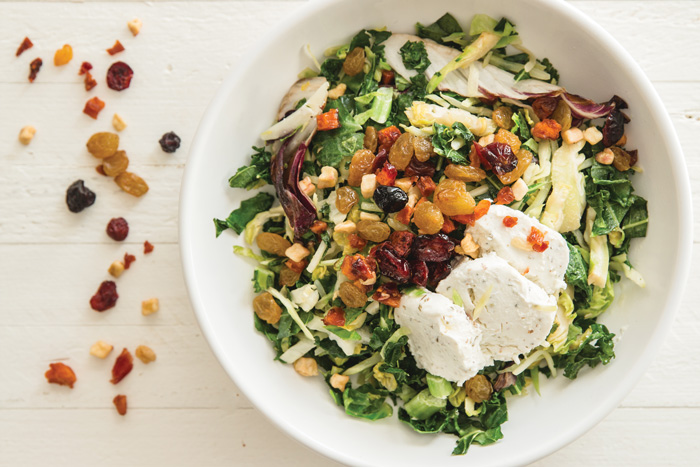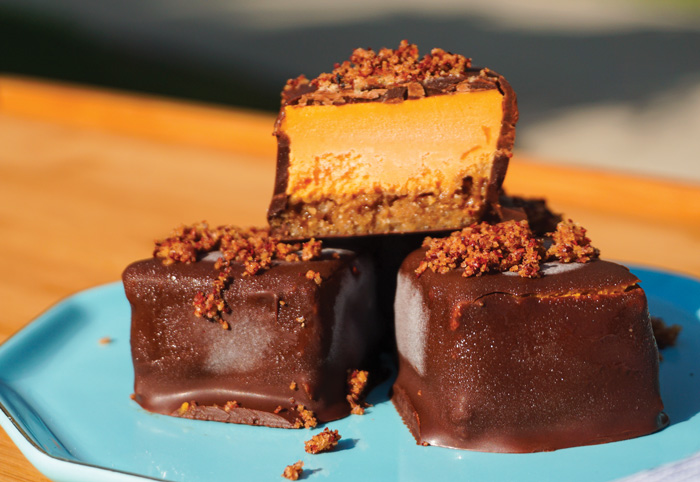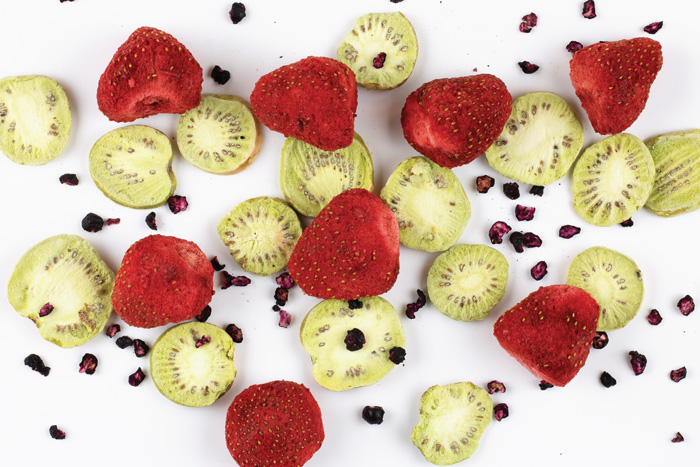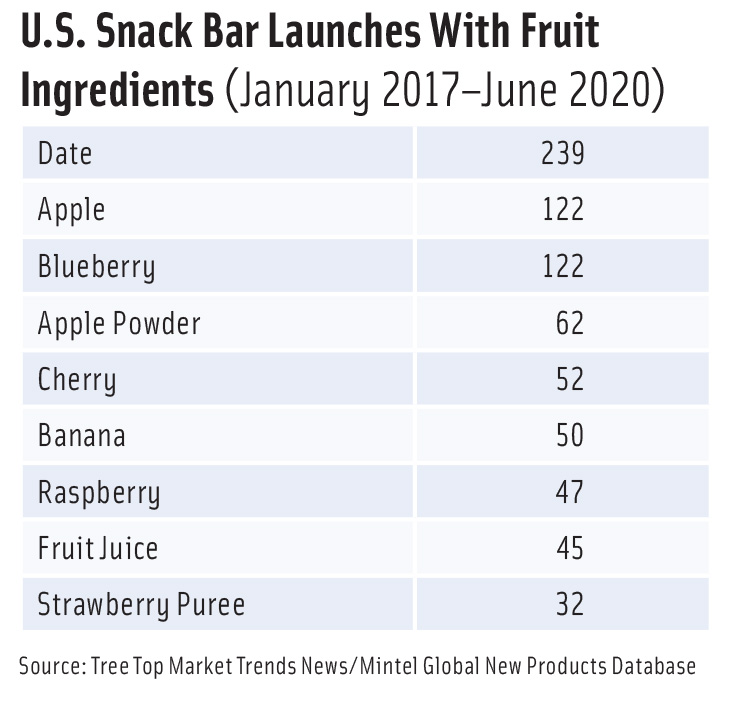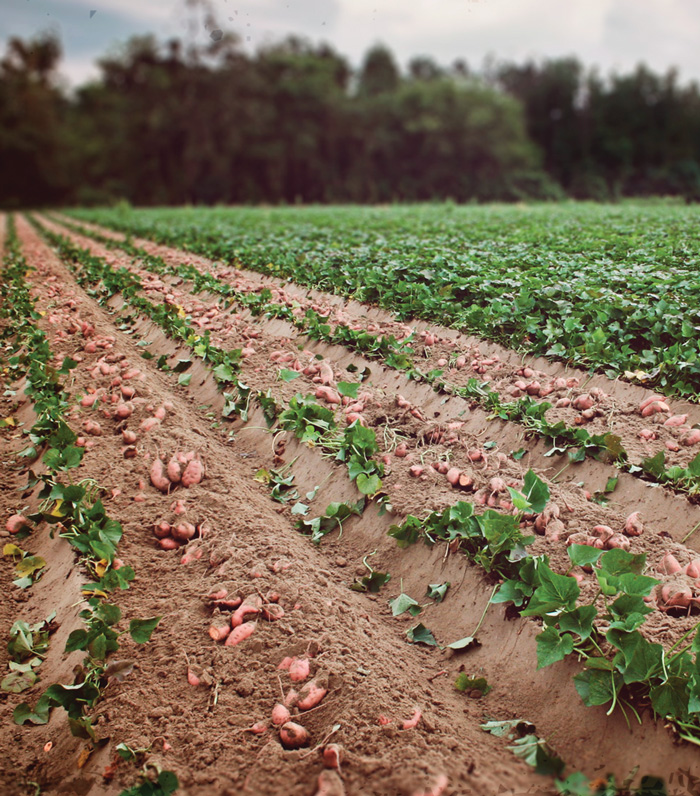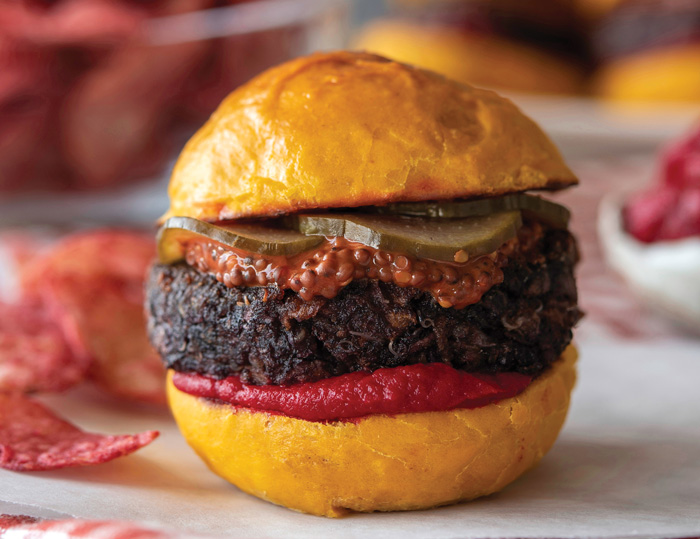The Time Is Ripe for Fruit, Veggie Ingredients
INGREDIENTS
As shoppers visit grocery stores less frequently during the ongoing COVID-19 pandemic, they’re finding it problematic to keep ample supplies of fresh fruits and vegetables on hand. But consumers still prioritize the natural health benefits of produce in the longer-lasting products they seek for both the pantry and the freezer.
“Consumers are choosing food with longer storage stability but are not sacrificing their desire for clean label, great-tasting, and plant-based foods,” says Gary Augustine, director of marketing at Van Drunen Farms, which produces freeze-dried, drum-dried, and IQF fruit, vegetable, and herb ingredients. “They are looking for familiar, better-for-you options with short ingredient lists they can pronounce to bolster their health in this stressful and uncertain time.”
“We love to eat our fresh fruits, but we also don’t want to go to the grocery store three times a week [anymore],” adds Brent Bradley, vice president of global operations at Traina Foods, a supplier of California sun-dried fruit ingredients.
Fruit and vegetable ingredients are ripe for growth in this environment: The North American fruit and vegetable ingredient market is projected to see a 4.2% compound annual growth rate from 2020 to 2025, according to recent research from Mordor Intelligence. Increasing sales of concentrates, pastes and purees, pieces and powders, and not from concentrate juices are being driven in part by rising demand for clean label ingredients, along with greater popularity of both beverages that use plant-based ingredients and frozen dinners, entrées, pizzas, and breakfast products, reports Mordor Intelligence.
Nearly one-third of U.S. ready meal consumers, in fact, now say they want options with a full serving of vegetables, according to recent Mintel market research on prepared meals. And half of adults seek snacks that provide a serving of fruits/vegetables, states market research firm IRI in its webinar “How America Eats: The State of the Snack Food Industry.” In addition, the 2019 USA Trend Study from HealthFocus found that eight in 10 adults strongly agree it is important to eat foods that are naturally rich sources of vitamins/minerals.
“Demand for natural products with perceived benefits is on the rise, and this trend has only been strengthened over the past months as consumers look to improve their lifestyle and diet to strengthen immunity,” says Santiago Vega, director of marketing at Naturex North America, part of Givaudan. “Specifically, we are seeing a spike in demand for vegetable juices from our fresh, all-natural line of vegetable purees and juice ingredients. Vegetable purees and juices, in their most natural form, are minimally processed sources of whole vegetable nutrition and offer the most clean label attributes a consumer can find.”
Fruit and vegetable ingredients intended for shelf-stable items, specifically juice concentrates, have seen tailwinds and are performing better compared with prior years, says Jose Guerrero, senior manager, business development at Kerr Concentrates, an Ingredion company.
Spindrift Beverage Co.’s Spindrift Pineapple, the latest flavor in its line of sparkling waters made with real squeezed fruit, rolled out in April, while Undercover Snacks’ Dark Chocolate + Pomegranate crispy quinoa snack with pomegranate arils debuted in March. Pepperidge Farms launched Goldfish Veggie crackers last January in two flavors: Cheesy Tomato and Sweet Carrot, each providing a one-third serving of vegetables per serving with no artificial flavors or preservatives.
Greater demand for shelf-stable foods during the pandemic also has created new opportunities for freeze-fried fruit and vegetables, says Angela Lofthouse, global sales and R&D director at Chaucer Foods, which produces freeze-dried ingredients.
“Unlike other drying methods, the freeze-drying process preserves the shape, color, and flavor of fruits and vegetables, as well as key nutrients,” Lofthouse says. Chaucer’s new freeze-dried smoothie mixtures, available in large or small pieces or powder form, can deliver the benefits and appeal of fresh smoothies to applications including snacks, cereal, baked goods, ice cream, and instant beverage mixes.
Many fruit and vegetable ingredients are uniquely capable of meeting pandemic-driven demands for shelf-stable products that help boost immunity while satisfying broader consumer desires for clean labels and other health-driven attributes like fewer or no added sugars. Here’s a look at the opportunities for specific fruit and vegetable ingredients that are poised for popularity in the current marketplace.
Super Fruits and Veggies
Consumers are more focused than ever on so-called superfoods that support immune health and overall wellness, says Van Drunen Farms’ Augustine, including berries, beets, avocados, and exotic fruits. Fifty-six percent of adults are interested in eating more superfoods, according to Datassential’s 2019 New Healthy Keynote Report, and nearly half of global consumers say they are consuming more immunity-boosting products since the pandemic began, reports Innova Market Insights.
“Our portfolio of immunity-supporting ingredients includes on-trend whole foods like acerola, orange, ginger, leafy greens, and dark berries,” says Augustine.
The company recently launched its Phyto-C ingredient made from 11 broad spectrum superfoods including organic acerola extract, blueberry, strawberry, maqui berry, açai, tart cherry, kale, broccoli, and turmeric extract. “It is a plant-based antioxidant blend that delivers 20% RDI (Reference Daily Intake) of vitamin C and is standardized to 15% polyphenols,” says Augustine.
In August, Diana Food became the first ingredient supplier to offer Fair for Life fair trade certified acerola powder to the market. The new clean label, organic acerola powder is suitable for tablets, beverages, and functional foods—as well as in savory or bakery products for food preservation in some countries.
“All of our fruits provide [health] benefits, but during this time, COVID-19 has been a catalyst in the focus on wellness, specifically immunity,” says Don Giampetro, vice president-innovation & quality at iTi Tropicals. “One of our top-demanded immunity ingredients is acerola, due to its high levels of vitamin C. . . . We’ve also seen spikes in açai for its antioxidants, and guava for its vitamins and fiber.”
Chaucer Foods’ Lofthouse says she is observing trending superfood ingredients that include nutrient-rich kale and fruits loaded with antioxidants, such as raspberries, black currant, and kiwi. “Many infused teas and waters include superfood ingredients like blackberry and guava with monk fruit for natural sweetness and vibrant color,” she says.
All manner of berries, in fact, are natural choices for consumers looking for superfood fruits with big taste and color appeal. “We’ve observed increased demand for fruits and vegetables known to have high levels of phenolic compounds and antioxidant benefits . . . elderberry, cranberry, black raspberry, blueberry, blackberry, and red raspberry,” says Kerr Concentrates’ Guerrero.
Vegetables With Benefits
On the vegetable side, “root vegetables like ginger, turmeric, and beet juice are in high demand due to the COVID-19 pandemic, as they are closely associated with immunity support,” says Naturex’s Vega.
“Purees made from fresh vegetables are a great way to pack in servings of vegetables while contributing natural flavor, texture, and color characteristics to foods across every category,” he says. “Demand is especially high for cauliflower puree, protein/fiber-packed bean purees, and chili pepper purees for vegetable-rich product development.”
Fire-roasted vegetables are also gaining in popularity, with 68% of consumers saying they love or like these ingredients, according to Datassential’s SNAP!2020 poll, says Vega. Sensient Natural Ingredients, for example, has introduced a line of California Fire Roasted Dehydrated ingredients that includes onions, tomatoes, red and green bell peppers, and green jalapeño, according to Holly Adrian, senior marketing manager at the company.
In addition, “We’ve developed several plant-based product applications featuring regional chili blends, roasted vegetables, and natural umami, which complement and boost the flavor of plant-based proteins,” she says.
Fruitful Sweetness
Consumers tend to associate low sugar with healthiness, and no/low/reduced-sugar food and drink launches are on the rise in the United States, according to data from Tree Top Market Trends News and Mintel Global New Products Database. Lemon juice concentrate topped the list of fruit ingredients used in these products between 2017 and 2019 with a 172% increase, with luo han guo extract (monk fruit) also showing strong gains (88%).
In the top five regional markets globally, including North America, “blueberry-containing products claiming to contain lower amounts of sugar increased over 200% in 2020 compared to products containing blueberries in 2019,” says Alicia M. Adler, vice president at North American Blueberry Council. “Blueberry ingredients are being leveraged across categories in low/no/reduced-sugar products.”
Dried fruits also can add sweetness without added sugar label claims, in addition to providing a boost of fiber and clean label benefits. Raisins, for example, “are a great replacement for artificial sweeteners and will not impact added sugar declarations,” says Tim Kenny, vice president of marketing at California Raisin Marketing Board. “And they are the ultimate clean label ingredient since they are perfectly natural, dried in the sun with no sugar added.”
Taura Natural Ingredients, which manufactures fruit pieces, flakes, and pastes, has developed JusFruit Fibre+ fruit solutions with added high-fiber ingredients that contain up to 15% less sugar than regular fruit inclusions and more than 20 g of fiber per 100 g. Fruit d’Or rolled out unsweetened and soft dried cranberries this spring with only 4 g sugar per 100 g. Infused with a soluble tapioca fiber and glycerin solution, the berries also contain 56 g of fiber per 100 g and can be used in bakery products, cereals, toppings, and trail mixes.
Coconut water, which is low in sugar and glycemic index, is a versatile ingredient for helping to reduce added sugar in a variety of applications, says Giampetro at iTi Tropicals, which recently added 100% Coconut Milk Powder. “Blending coconut water (concentrate) with other juice (concentrates), you can maintain high levels of juice in your products while lowering and controlling the sugar impact,” he explains.
Sweet Support From Veggies
Vegetables are also gaining ground as an alternative way to maintain sweetness and taste without as much added sugar. “In the beverage space, there is tremendous demand for reducing sugar levels from fruit juice ingredients,” says Vega. “Vegetable juices are increasingly being used as a substitute as they are lower in Brix and lower in calorie content. [They] . . . can replace fruit juice and reduce sugar by upwards of 30%, while still enabling a 100% juice claim. Single-strength vegetable juices made from romaine lettuce and cucumbers are the best options for formulation.”
“High Brix vegetable ingredients, such as parsnip, are promising as they can help enable a vegetable claim, sweetness, and are able to support low added sugar claims,” Kerr’s Guerrero adds.
Vegetables also can help with flavor issues for high-intensity sweeteners, says Paul Verderber, director of sales at Carolina Innovative Food Ingredients, which specializes in sweet potatoes. “We have active projects in the baking industry that are combining high-intensity sweeteners with our clean label sweetener named Carolina Sweet. The Carolina Sweet adds body, helps mask some of the off-flavors in high-intensity sweeteners, and is considered clean label.”


